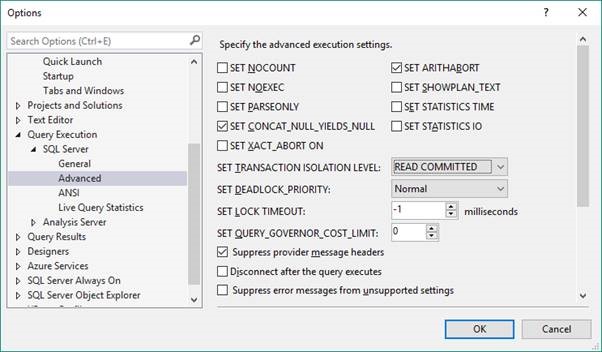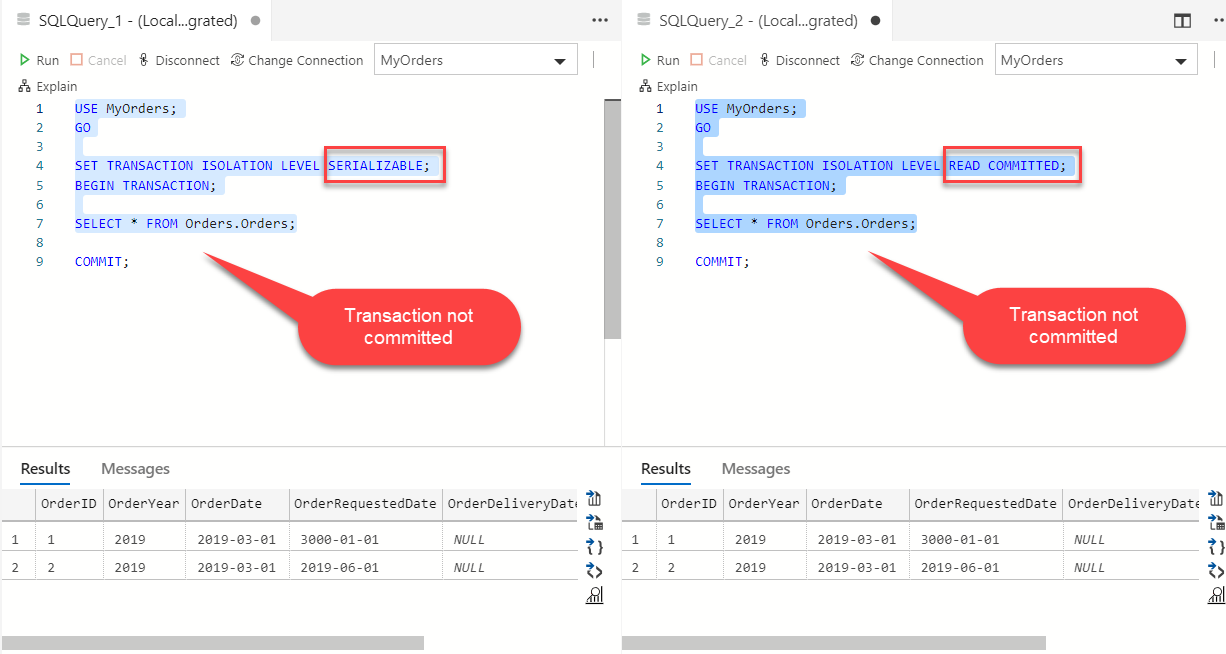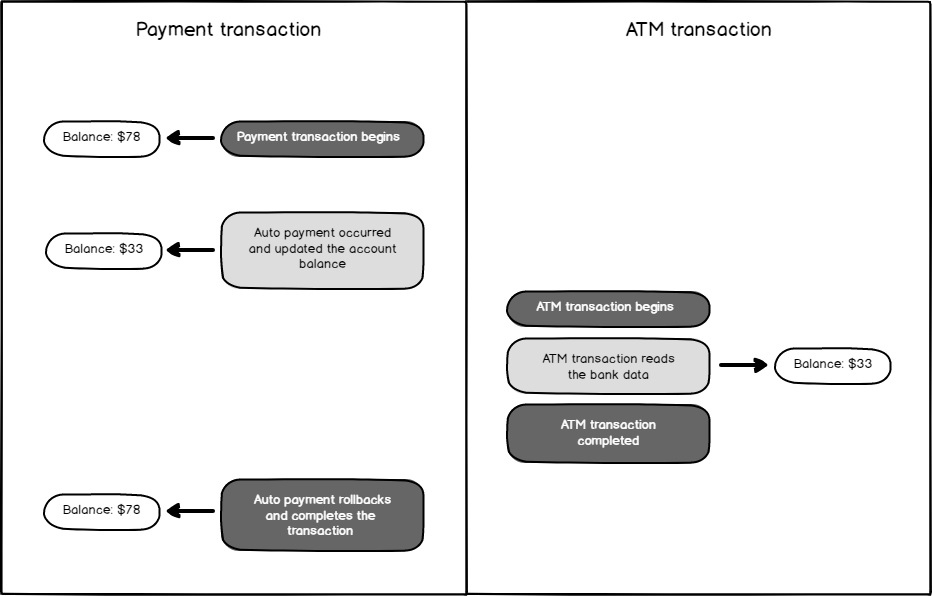Explain Different Isolation Levels Sql Server
An isolation level is essentially locking a particular row while performing a task so that other transactions on the same row cannot access or have to wait for the current transaction to finish its job. Locks are applied on all data being used by a query.

Isolation Levels In Sql Server Sqlservercentral
Understanding Different Transaction Isolation Level In SQL Server.

. There are four levels of isolations which are explained below Read Uncommitted It is the lowest level of isolation. The highest isolation level serializable guarantees that a transaction will retrieve exactly the same data every time it repeats a read operation. This is the lowest isolation level there is.
Weve seen that in order to prevent concurrency issues isolation levels are used to isolate transactions or statements from each other. A lower isolation level increases the ability of many users to access data at th. What is Isolation levels.
In SQL Server Transaction Isolation Level maintains the data Integrity so that all users of the data are in Sync. If a transaction has an isolation level that is for example SERIALIZABLE and within the transaction an attempt is made to access metadata by using catalog views or metadata-emitting built-in functions those queries will run until they are. Keep in mind that the SET command applies only to your current connection and every time you make a new connection or open a new window in the Query Analyzer youll be back in the default.
Shared locks are held while any data is being read. Here are the isolation levels by name. Explain different isolation levels defined in SQL Sever.
An isolation level determines the degree of isolation of data between concurrent transactions. There are thus no shared locks or exclusive locks. Types of Isolation level.
Isolation levels in SQL Server 1. It is the least restrictive of all the isolation levels. SQL Server Isolation Levels By Example Read Uncommitted.
Read Uncommitted Read Committed Repeatable Read Serializable. Isolation levels determine the degree of isolation of data during concurrent access. The isolation level that your transaction runs in determines how sensitive your application is to changes other users transactions make and consequently how long your transaction must hold locks to protect against these changes.
Internally the SQL Server Database Engine only honors the READ COMMITTED isolation level for metadata access. But it uses a level of locking that is likely to impact other users in. The main difference being that optimistic levels try to reduce the amount of locks needed but as a consequence suffer other overheads such as increased tempdb usage.
There are two levels of READ COMMITTED isolation which are locking and snapshot. While the lowest level can read uncommitted data. Statement Isolation Level 6.
Microsoft SQL Server supports these transaction isolation levels. This isolation level allows to insert new data but does not allow to modify data that is used in select query executed in transaction. February 1 2022 by Artemakis Artemiou.
The dirty reads are allowed which means one can read the uncommitted changes made by another. The default SQL Server isolation level is Read Committed. You can easily get details about the isolation level for a given SQL Server database by using the below T-SQL script.
Specifies isolation level 0 locking. Read committed It allows no dirty reads and clearly states that any uncommitted data is committed now it is read. The isolation level can be explicitly specified on a DELETE INSERT SELECT INTO UPDATE or select-statement.
Read Committed This isolation level guarantees that any data read is committed at the moment it is read. Only one of the isolation level options can be set at a time and it remains set for that connection until it is explicitly changed. Locking is the most straightforward and simply means that once an UPDATE transaction is open exclusive and intent-exclusive locks are taken out on the page key range if appropriate and object.
The different isolation levels are normally split into two groups the ones that are described as pessimistic and the ones that fall under optimistic. The access can be data read or update. Each level provides a different degree of Isolation amongst transactions and has its own benefits and anomalies.
In this level one transaction may read not yet. SQL Server provides five isolation levels to implement with SQL transaction to maintain data concurrency in databases. What are the Types of Anomalies.
Based on these phenomena The SQL standard defines four isolation levels. It can also gives back the data that have been modifies which is not committed by other transactions. Read uncommitted causes no shared locks to be requested.
SQL Server acquires a share lock while reading a row into a cursor but frees the lock immediately after reading the row. Here are the other isolation levels in the ascending order of isolation. Db2 for i provides several ways to specify the default isolation level.
There are five transaction isolation level in SQL Server. Transaction Isolation Levels READ UNCOMMITTED READ COMMITTED Default REPEATABLE READ SERIALIZABLE SNAPSHOT B. You can change the level of isolation that a particular connection is operating in by using the SET TRANSACTION ISOLATION LEVEL command.
The ISO standard defines the following isolation levels in SQL Server Database Engine. If the isolation level is not explicitly specified the isolation level used when the SQL statement is executed is the default isolation level. Read Uncommitted Read Committed Repeatable Read Serializable are the different isolation levels defined in SQL Server.
Before we delve deeper into isolation levels lets understand what different types of anomalies are. Read Uncommitted Read Uncommitted is the lowest isolation level. Choosing the appropriate isolation level depends on balancing the data integrity requirements of the application against the overhead of each isolation level.
This is the default isolation level and means selects will only return committed data. Serializable Isolation is similar to Repeatable Read Isolation but the difference is it prevents Phantom Read. SQL Server isolation levels.
This is very useful when multiple users access the same data at the same time. The MySQL InnoDB engine provides four levels of Isolation using different locking mechanisms. The default SQL Server isolation level is Read Committed.

Snapshot Isolation In Sql Server

Isolation Levels And Locking In Relational Databases


No comments for "Explain Different Isolation Levels Sql Server"
Post a Comment